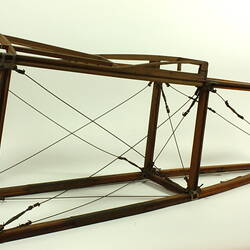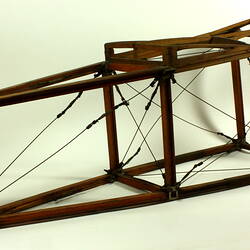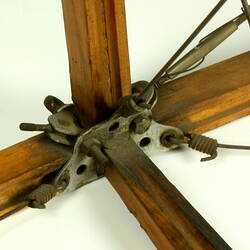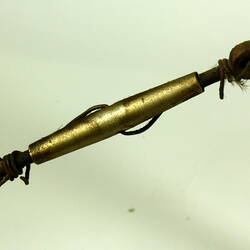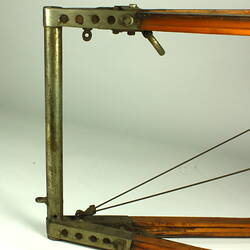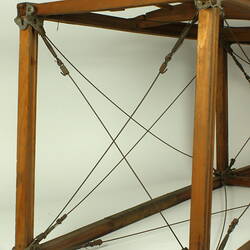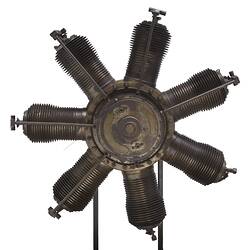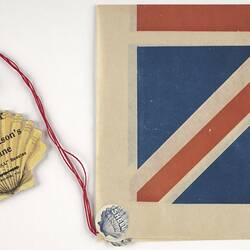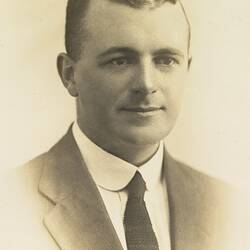Summary
Wooden framed rear fuselage section with wire bracing, constructed of seasoned Tasmanian mountain ash (Eucalyptus regnans species). Part of a Sopwith type single-seat biplane built by the donor's son, Basil Watson, in July-October 1916.
Basil Watson was introduced to flying by Harry Hawker during an Australian publicity tour in early 1914, and subsequently travelled to England with Hawker, where he undertook flying lessons and worked as an engineer with the Sopwith Aviation Company. After the outbreak of WWI he was seconded to the British Government as a military test pilot, based at Brooklands aerodrome. He was severely injured in a crash after suffering an engine failure on take-off during a test flight in June 1915, and returned to Australia 12 months later, after being declared medically unfit for further military service. After constructing his own biplane from scratch at his parent's home in Elsternwick, in little more than 3 months, Watson piloted the aircraft on pioneering flights to Bendigo, western Victoria and Mount Gambier. He performed the first public aerial acrobatics flying demonstrations for crowds of spectators in Melbourne and country towns, and flew the first official airmail between Mt Gambier and Melbourne in February 1917. He was killed on 28th March 1917 when his aircraft crashed in shallow water in Port Phillip Bay, after a structural failure occurred as he performed an aerobatics display over Point Cook, Victoria. His death was the earliest recorded aviation fatality in Australia.
Presented to the Museum in 1919 by James Isaac Watson, father of Basil Watson, together with the Gnome aero engine and other items salvaged from the wreckage of the crashed aircraft. This surviving section represents the two rearmost panels or bays of the fuselage frame cloest to the tail, as shown in the photograph (MM 143494), which shows the aircraft fuselage under construction in the billiard room of the Watson family home 'Foilacleugh' in Elsternwick, Victoria.
Physical Description
Wooden framed tail fuselage section in two rectangular bays, with struts of seasoned Tasmanian mountain ash, steel corner brackets and diagonal steel bracing wires or stays with tensioning turnbuckles.
More Information
-
Collection Names
-
Collecting Areas
-
Acquisition Information
Donation from James I. Watson, 28 Oct 1919
-
Maker
Mr Basil G. Watson, 'Foilacleugh', St Kilda Street, Elsternwick, Greater Melbourne, Victoria, Australia, Jul-Oct 1916
-
Classification
-
Category
-
Discipline
-
Type of item
-
Keywords
Aeroplane Components, Aircraft, Aircraft Manufacture, Aviation, Aviation Pioneers, Biplanes, Fastenings, Fuselages, Turnbuckles, Wire Strainers, Wires

